Interesting Facts About Spiders
When it comes to the top 10 most diverse populations on earth, spiders have a strong claim. They can be found in nearly every type of habitat and they’re one-of nine invertebrate groups that make up more than 90% all animal life forms! Without these furry little guys around we wouldn’t know what feels good against our skin or tastes great when eaten – not even close.”Spiders play vital roles throughout ecosystems everywhere except inside your home; that’s where you want them least because there is nothing GOOD about having bugs crawling through basements windows at night (or during daytime).
All Spiders Produce Silk
Spider silk is one of the strongest and most durable materials on Earth, able to withstand any weather condition. It’s also incredibly flexible which allows for innovative uses such as creating temporary shelters or trapping prey with its sticky properties. In fact there are over 40 thousand species worldwide that have mastered this craft!
O
It was thought that all spiders were carnivorous, capturing and eating other insects, but one species in Central America has been found to be mostly herbivorous! Bagheera kiplingi inhabit trees that produce protein-rich buds on their leaves. These buds are part of a symbiotic relationship between the trees and ants, but B. kiplingi also benefit from consuming the buds. However, during dry seasons these spiders are known to be carnivorous. They may cannibalize each other or steal ant larvae when food is scarce.
Spiders are nearsighted.
Unlike humans, spiders have eight eyes. However some species only have six and these are called “six-eyed.” Spiders typically use their main set of powerful lenses to create images in the background while secondary sets can only detect light or shadow with no color coding capabilities like human vision does for identifying objects nearby us on screen! It is thought that insects evolved from a common ancestor together before both groups split off into different branches ages ago. Spiders are nearsighted because they don’t need to see far. They wait for prey in their webs and use silk trip wires to warn of approaching predators, but it doesn’t matter how many eyes you have if something is right next door!
Females can lay up to 3000 Eggs at once.
The care a female spider provides for her young varies depending on the species. Some will die shortly after laying them while others carry their eggs or share prey with them and survive longer than expected pregnancies that are often just short periods in which there is no movement from one location to another but still within its silk sacs containing developmental stages called “juveniles.”
Jumping Spiders can jump 50 times their length.
Jumping spiders, like many other animals with the ability to jump great distances and heights have been found in nature escaping from predators. They do so by using this hydraulic system which creates springs within their legs allowing them propulsive movement towards danger or away from it depending on what is needed at any given time.
The input states that “jumping spiders can alter pressure fluids” causing an increase momentum when necessary for jumping multiple times one’s length while avoiding capture.
The “Daddy Long Legs” you see may not be a Spider.
The Daddy Long-Legs is not an actual spider, but rather a type of insect. There are many different insects that have been given this nickname including Crane Flies and Harvestmen which lack venom or silk glands in their bodies to produce webbing for chewing on things like human food left out overnight while cellar spiders can be found across America mostly near wine cellars due mainly because they prefer eating other invertebrates at night when humans aren’t around.
Truth be told that when dealing with spiders you can never be too careful. Some spiders can be deadly to your health. Often times it’s best to let a professional handle things. Here at Spire Pest of Richmond we are dedicated to eliminating your pests.give us a call so we can send our experts out (804)396-2704.



